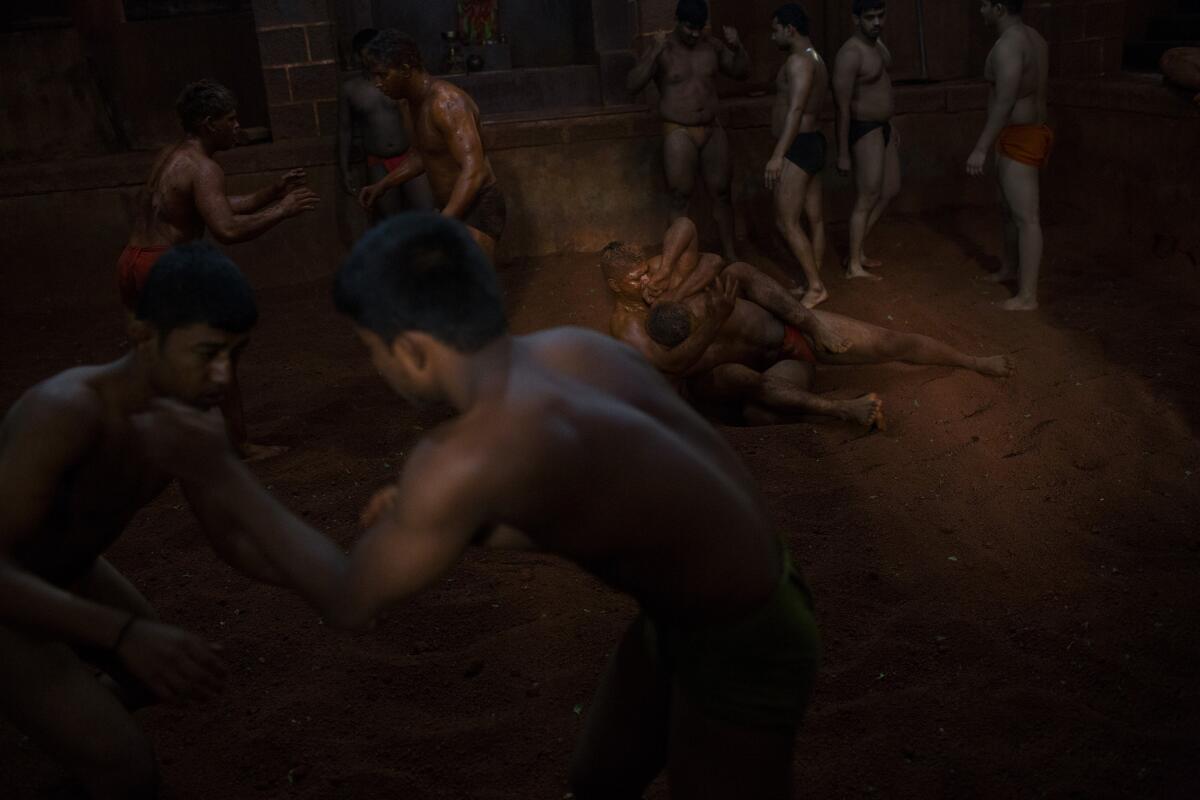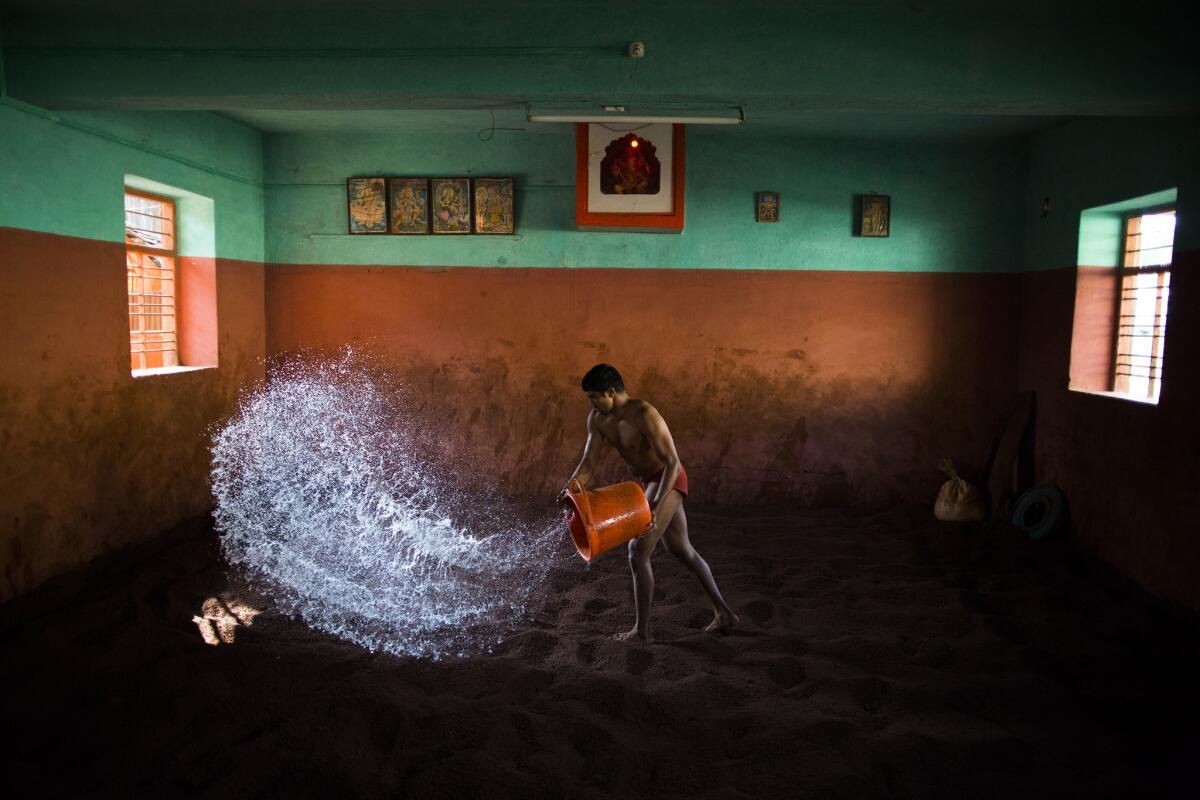A look at India’s ancient form of wrestling, Kushti, in practice for 3,000 years

- Share via
In India, a traditional form of wrestling known as kushti has been practiced for some 3,000 years. The tradition of wrestling in red clay pits is deeply rooted in the city of Kolhapur.
At the wrestling school, or akhara, men in their 20s and 30s dedicate their lives to the sport. The wrestlers – who fight, sleep, and eat together – observe a strict life of abstinence. They wake up at 3:30 a.m. each day to train for hours before eating and then have another strenuous training session in the early evening under the supervision of a coach.
This way of life may be changing soon. The Indian Fighters Federation recently announced a ban on red soil fighting and advised wrestling clubs to instead train on mats to improve their chances of winning medals at the Olympics.
Photographs by Barbara Davidson
Read the story>>















Sign up for Essential California
The most important California stories and recommendations in your inbox every morning.
You may occasionally receive promotional content from the Los Angeles Times.







